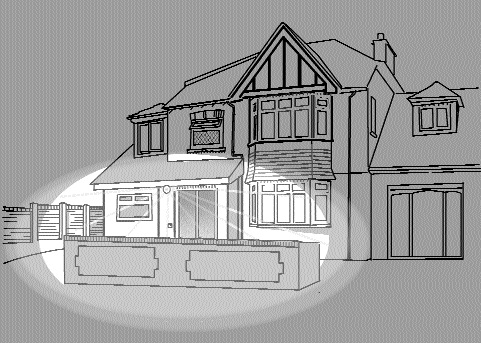Feedback on this page

We install lights outside our homes not just for security, but also for aesthetic effect, practicality, safety and socializing. The following sections in the left-hand navigation column provide you with information about the various types of lamps and light fittings that are available, the methods by which to switch the lights on and off and where these lights should and should not be located (from a security perspective).
Switched-On Products
Switched-On Products, a supporter of this website, is the manufacturer of the UK’s first ever automatic light switch timer to fit over an existing wall light switch, without the need for any wiring.
Check out their Directory page on this site for more information
Electrical safety!
When you have read the relevant parts of this chapter go to Lighting, Building Regulations affecting lighting to see if you have to use a qualified electrician to do the job. Many of the jobs you would have done yourself in the past now have to be carried out by ‘competent person’ as defined in the Building regulations.
The Basic Dos and Don'ts
-
Do install external lights for your convenience and safety more than anything else
-
Do be aware that whilst external lighting around the house and garden is useful in a practical sense it is certainly not a guarantee against crime.
-
Do treat claims that external lights around the home deter criminals with some scepticism
-
Do be in control of your external lights and be able to switch some of them on from inside the home, especially those over your rear/side garden
-
Do use low wattage compact fluorescent lamps
-
Do experiment with standalone solar powered lights, but don’t expect the same performance you would get from mains powered lights
-
Do use a competent person to carry out new electrical installations (see Lights to prevent crime Section 3 Building regulations)
-
Don’t permanently light areas that cannot be overlooked by you or your neighbours
-
Don’t be tempted to install floodlights higher than 150 Watts(see Section 3 Building regulations)
-
Don’t install lights that will be a nuisance to others
- Don’t send light above the horizontal
Thanks
I am very grateful to Thames Valley Police’s Crime Prevention Design Adviser, Dave Stubbs MA PG Cert. Ad. Cert. CP & ED, for reading through this section and providing some interesting information that I forgot to include.



